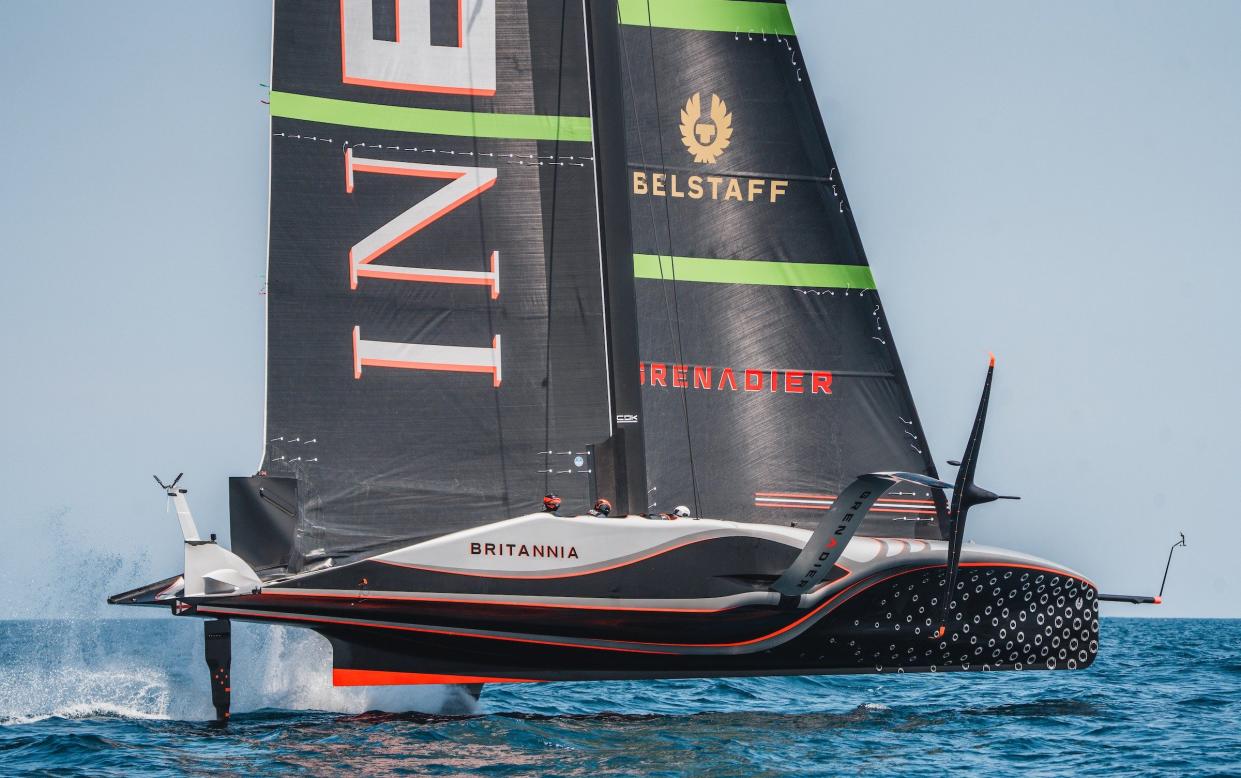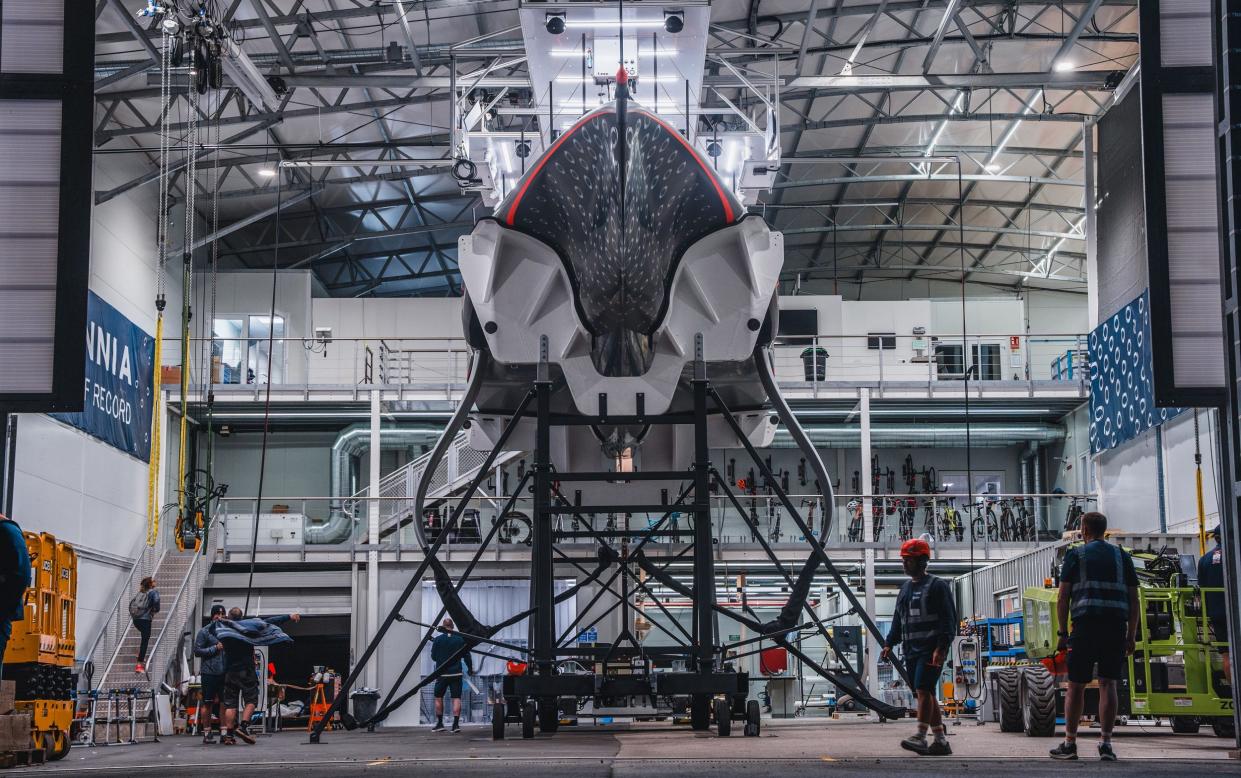Britain’s America’s Cup boat is a six-tonne rocket ship – here is how our first test went

It is difficult to describe the emotion of getting out on our America’s Cup boat for the first time on Wednesday.
This isn’t a boat that was suddenly delivered to us, like driving a new car out of the showroom. RB3, as we have code-named her, is a 75-foot, six-tonne rocket ship that we have spent the last two years designing, building and tweaking. We have sweated over every inch, pored over every detail.
Over 120,000 parts and tens of thousands of hours, racked up by a team comprised of the very best from the marine industry and Formula One. It’s hard to emphasise just what a big moment it was for our team, as it was for all of our competitors when they launched.
RB3 | Sailing Squad
The keys have been handed over. Time to go sailing#ChallengeofaLifeTime #AC37 pic.twitter.com/qwu2pZBz4a— INEOS Britannia (@ineosbritannia) May 1, 2024
So, it’s fair to say there was much excitement and no little trepidation when we docked out in Barcelona on Wednesday. When you first pull the sails on and accelerate in a yacht of this scale and with this much performance, it’s fair to say that your senses are on red alert. How does the boat feel? How quickly will it take off? What are all the alarms blaring away in your in-ear comms system?
It’s not quite Apollo 11 landing on the moon but you get the gist of the intensity on board the boat in these key moments.
Day 1 ✅ Big day for the Team 👊#RB3 #AmericasCup #Sailing #AC37 #Barcelona pic.twitter.com/1YOwEh8fDn
— INEOS Britannia (@ineosbritannia) May 2, 2024
The sorts of things you’d expect when you’re dealing with over several hundred sensors and channels; so many systems, so much gadgetry. But nothing to be alarmed about. We got up on the foils and did some manoeuvres, which went pretty much to expectations. We didn’t attempt to set any speed records, but we were going over 40 knots at times.
We had a pretty good idea of how we were going to go as we did a tow test last Friday, which is when the boat is pulled along by a tow line to get it up on its foils and check that everything works. With so many new systems to test – new foils, new rig and sails, new control systems and so on – it’s standard practice to test everything in a controlled manner before putting up the sails and letting rip.
What we do not yet know is whether this is the boat that is going to end 173 years of hurt.
The America’s Cup is unique in that you and your competitors build something to a set of regulations, over the course of years, completely blind, and then launch and test and race it within the space of a few months.
We are the fourth team to launch our Cup boat so far. Alinghi were the first to launch, closely followed by Team New Zealand and Luna Rossa a couple of weeks ago. Team France and American Magic should not be far away. And so far we are reasonably comfortable with what we have seen.
Concept, design & execution x Harken deliver! Announcing the continued Partnership with @HARKEN supplying deck hardware, blocks, winches, and hydraulic cylinders and custom designs for test and racing
Read more ⬇️https://t.co/E2kkW1lZw9#Harken #INEOSBritannia #AtTheFront pic.twitter.com/YOhd7EF7sp— INEOS Britannia (@ineosbritannia) May 2, 2024
There are some subtle differences between all the boats. It’s clear that everyone is trying to chase after the same performance gains, just in slightly different ways. The big talking points have been the keel line of the boat – what we call the bustle. That’s how the boat is aerodynamically sealed to the water plane. And then some interesting features in terms of the layout of the crew, and how the rudder rake is packaged. In some teams the rudder control systems are beneath the water line. And then with ourselves and American Magic it’s above the water line. So that’s an aerodynamic-hydrodynamic trade-off which is interesting but is unlikely to be a game changer.
The foils will be key of course. We haven’t seen the race foils yet for Emirates Team New Zealand (who have the luxury of being the defenders, which means they can hold back their designs for longer if they so wish). Or Luna Rossa’s. But we’ve seen Alinghi’s.
Countdown to the 37th Louis Vuitton America's Cup. Today we introduce you to Alinghi Red Bull Racing, a team that has combined local tradition with the spirit of the America's Cup.@BarcelonaInfoEN @bcn_ajuntament @cambraBCN @americascup @alinghiredbull @LaFuraDelsBaus pic.twitter.com/ffrt9ENoTw
— Barcelona Turisme (@BarcelonaInfoEN) April 24, 2024
Nothing so far has made us go, ‘Oh s---, we’ve missed something big’. Just subtle differences. There was some talk that the Kiwis might go with a recumbent position for their cyclors, but that proved to be a wild rumour. The Americans could still go that route. We haven’t seen their solution yet, but it’s a possibility.
So far I’d say we have been one of the more aggressive in terms of pushing the envelope on design, particularly on the aerodynamic modelling. And that shouldn’t be a surprise given our Mercedes F1 partnership.

It’s a fascinating period and it’s what we love about these design differences; that it’s got all of the armchair admirals beavering away, analysing it, coming up with different viewpoints.
Time will tell. After losing the first Cup way back in 1851, Britain has never managed to win it back. So we are up against the weight of history as well as the might of the Kiwis, the Italians, the Americans and so on. But we are hugely excited and proud to be representing Britain in this challenge.
We have the official naming ceremony for the boat coming up in a few weeks time with Sir Jim Ratcliffe, our backer, and his family. In the meantime, we will get our heads down, crunch the numbers from our first sail and keep refining what we have.
After years of design and development, it’s amazing to be out on the water with our focus firmly on maximising performance when it counts.


